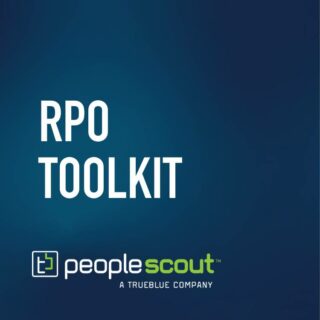Diversity recruiting is a hot topic right now. As your organisation continues on its journey toward becoming more diverse, equitable and inclusive, it’s important to ensure that you’re relying on the most up-to-date strategies and understanding of candidates’ needs and behaviours. And, while there are many assumptions and diversity recruiting strategies that have become part of accepted wisdom throughout the years, are they still true? Are they still the most effective methods for interacting with candidates?
In my role as PeopleScout director of employer brand and communication strategy, I deliver actionable insights and consultancy to clients; in essence, I help employers understand, articulate, and measure what makes their organisations unique places to work and then help them better understand and engage audiences from underrepresented groups. As such, I’m very outcome-focused. I don’t want to generate insights for the sake of insights; I want to challenge employers and support them in their journeys. For me, that means constantly interrogating what we think we know, what we just accept to be true and how effective our strategies are and how to manage diversity better.
So, in this article, I’ll examine the traditional wisdom around diversity in recruiting. Specifically, we’ll look at how our understanding of candidates from underrepresented backgrounds has evolved, share updated recruitment methods, and reflect on how factors like intersectionality and social mobility can be part of an effective recruitment process.
Rethinking Limited Media Targeting & Focusing on Employer Branding
Traditionally, when employers have wanted to recruit candidates from underrepresented groups, they’ve relied on limited media targeting. For example, if an organisation was looking to attract more women, talent leaders would post open jobs on job boards targeting female candidates. And, while this is one strategy to bring in more diverse candidates, it does have its limits. For one, it doesn’t take into account what we know about candidate behaviour.
Rather, by tracking engagement metrics and actually speaking with candidates, we know that just because a person consumes a certain type of media in their everyday life, it doesn’t necessarily mean that a person will use that specialised media in their job search. Take me, for example: I’m Black and I’m female and I’m absolutely proud to be both of those things. But, neither of those has ever formed the basis of my job search. Instead, if I were looking for a new role as a communications consultant, I’d look at platforms offering roles related to my profession. Then, I’d research potential employers to ensure that they were welcoming and inclusive.
So, instead of focusing on targeting niche, identity-related media and job boards, employers should focus on targeting the right professional or work-related channels with the right messaging. This means going beyond just talking about the responsibilities of the role in the job posting to also focusing on diversity and inclusion (D&I) within the organisation as a whole. When candidates from underrepresented groups are searching for jobs, the right job title might be enough to get them to click on a posting—but whether they actually apply is influenced by what they read and hear about how an organisation treats its people. Likewise, whether they continue in a recruitment process depends on how they’re treated throughout the candidate journey.
Diversity Recruiting Strategies for an Inclusive Recruitment Process

But, what does this look like in practice? Well, if talent leaders at an organisation have analysed the data and decided that they want to focus on certain demographics, the right campaign can be pretty effective if they make interventions at the right point in the hiring process. Below, I’ll outline some examples using the common goal of attracting more women.
Language in Job Postings
To ensure an inclusive process, employers should pay close attention to the language used in job postings. For instance, accepted wisdom suggests that women can sometimes be put off by words like “excellent,” “strong,” “driven” or “competitive.” So, to generate optimum engagement, one obvious intervention would be to find alternatives to use in job postings.
However, it’s not that simple. In my work, I’ve spoken with many senior female professionals who say they expect to see words like that in job advertisements aimed at their level. Therefore, for employers, this means that language does matter—but your solution cannot be a one-size-fits-all. Instead, the language you choose for a job posting should feel inclusive, but should also reflect the job type and career level of candidates.
Job Criteria
Many talent leaders are familiar with the research that shows how women are less likely to apply for roles where they don’t meet 100% of the criteria, whereas men will apply if they meet just some of the requirements. Interestingly, anecdotal feedback from women shows that this isn’t because women don’t feel as though they can’t do the job; rather, they just don’t want to waste their time or energy on an application that they believe would be automatically rejected.
So, to build a more inclusive job posting, employers should list only the essential criteria. Additionally, talent leaders should recognise that, as the list of criteria on a job posting gets longer, the applicant pool for that job will likely become less diverse.
Representation
You’ve heard the phrase “representation matters.” In popular media today—whether it’s movies, television or literature—you can see it in action. Similarly, employers must employ the same principles in their recruitment process, as well.
If we stick with the example of attracting more women, that means employers should ensure that any recruitment communications include voices and stories from women at all levels of the organisation. Likewise, employers should also be transparent about their diversity recruitment data and any plans in place to shift the dial around female representation. Then, when female candidates encounter more female voices throughout the process, they’ll realise that not only are they welcome at the organisation, but they’ll also have the opportunity to thrive and progress. The same principle can be applied to any demographic group.
What is Intersectionality?
Thus far in this article, we’ve discussed diversity in simple, binary terms. But, if you’ve been paying attention to the D&I space, you’ve likely heard the word “intersectionality.” Intersectionality is about recognising the connections between social categories—including factors like race and ethnicity; gender identity; neurodiversity; and social class—and how an individual can be a combination of those things and potentially suffer compounded discrimination and disadvantage because of it.
As a talent leader, you must approach D&I from an intersectional perspective. Unfortunately, there can be multiple potential failure points in a candidate’s journey due to the intersectional nature of the people applying for roles. So far, I’ve used women as an example. But, the perceptions and experiences of Black women will be different from white women, Latina women or Asian women. Going even further, consider whether your female candidate is also from a socially disadvantaged background. Or, is she neurodiverse? All of these will influence how she interacts with your organisation and whether she sees a potential career with you. And from your side as the employer, these combined factors also increase the risk of her falling victim to multiple adverse impacts in your recruitment process. So on the basis that no person is just one demographic, it’s critical that your organisation considers intersectionality and ensures your processes are audited to eliminated as many chances as possible for bias to creep in.
For me, employer brands and diversity recruitment marketing campaigns that factor in intersectionality are far more likely to be inclusive. They’ll be the ones showcasing employees across a range of demographics so that candidates can see a variety of different types of people flourishing at an organisation. They’re also putting in the work to make any necessary adjustments in the candidate journey, so that everybody has an equal opportunity to do well. That includes training for recruiters, hiring managers and other decision-makers, too.
The Role of Social Mobility in Diversity Recruiting
Another factor that often gets lost in discussions of diversity, equity and inclusion is the role of social mobility. Social mobility is the link between a person’s occupation or income and the occupation or income of their parents. The stronger the link between a child and a parent, the lower the level of social mobility; the weaker the link, the higher the level of social mobility. For example, if an individual works on a production line at a factory and that’s also what their parents did, then that’s a low level of social mobility. If, on the other hand, the same individual secured a white-collar, managerial role, then their social mobility is high because of their earning potential.
In diversity recruiting initiatives, social mobility can play into D&I programs in a number of ways, but, most importantly, it plays a critical role in helping individuals achieve better outcomes. Plus, it also contributes to organisational success because it adds an additional layer of diversity within critical teams.
There are several ways that employers can engage with social mobility; one is through schools and outreach activities, where you can introduce students in disadvantaged areas to careers that they may not have otherwise heard about. You can also use apprenticeships as a strategy to get early-career talent into roles that might not otherwise be accessible to them, while also allowing them to continue their education. Additionally, those employers that are able to make any of their roles fully remote can engage workers from disadvantaged areas and who may not have access to strong career opportunities within easy commuting distance.
Making the Change
For many employers, the strategies I’ve outlined will present a marked change from their standard way of doing business—and that’s okay. It’s important to recognise that change won’t happen overnight. When it comes to engaging with potential candidates from underrepresented groups, it’s about building an inclusive employer brand that appeals to multiple demographics and fosters a sense of potential belonging in an organisation. Diversity recruiting also very much about building a brand that focuses equally on messaging, human stories and the candidate journey—and making sure that the different parts of the process truly support bringing in individuals from all walks of life who are the best people to fill your roles.




